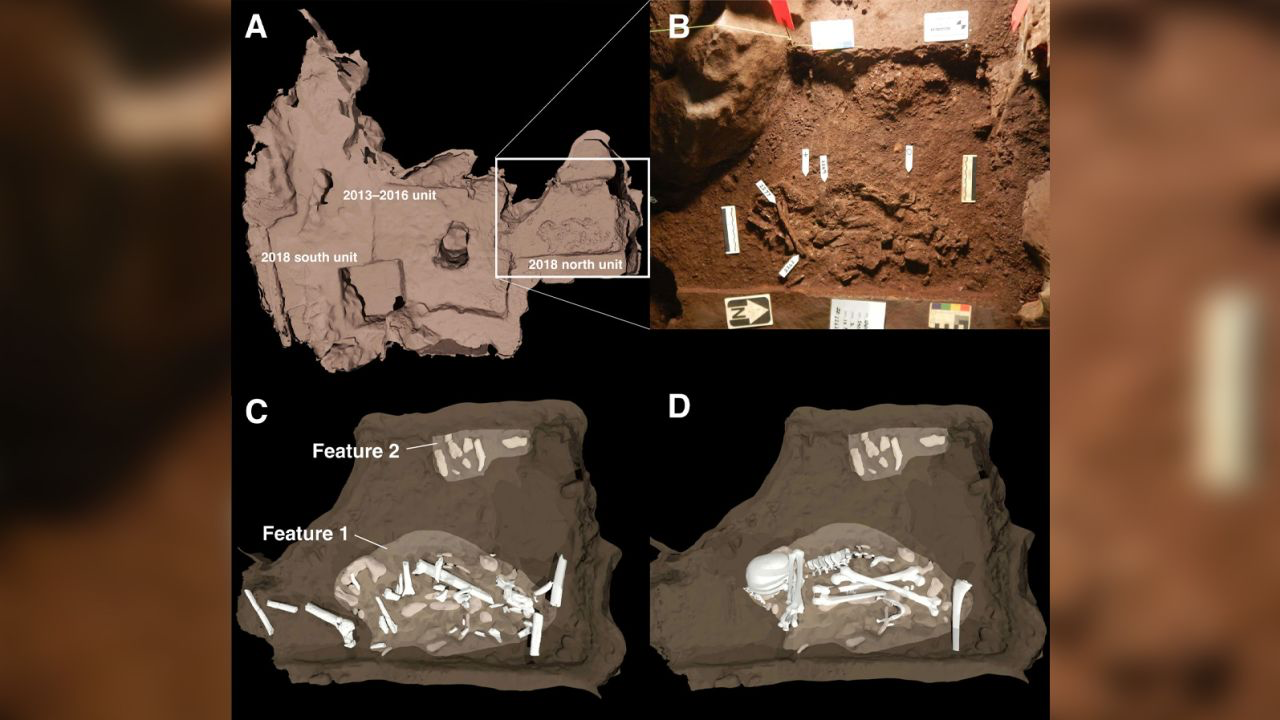Description

Disclaimer: Copyright infringement not intended.
Context
- A series of significant discoveries made by researchers regarding the behavior and characteristics of Homo naledi, an extinct archaic human species.
Details
- Researchers have discovered evidence of burial and symbolic behaviors in Homo naledi, an archaic human species.
- These behaviors predate the earliest evidence of such practices in modern humans.
- The brain size of Homo naledi was approximately one-third the size of a modern human brain.
- The findings challenge previous assumptions that these behaviors were exclusive to larger-brained Homo sapiens and Neanderthals.
- Three studies detailing the findings have been accepted for publication in the journal eLife.
Discovery of Homo Naledi:
- Fossils of Homo naledi were first found in the Rising Star cave system in South Africa in 2013.
- The cave system is part of South Africa's Cradle of Humankind, a UNESCO World Heritage Site.
- The extensive cave system has been explored by a team of researchers led by Dr. Lee Berger.
- Homo naledi shared some characteristics with humans but had smaller heads, shorter stature, and different physical features.
Burial Practices of Homo Naledi:
- Homo naledi remains, including adults and children, were found buried in the fetal position within cave depressions.
- The burials are older than any known Homo sapiens burials by at least 100,000 years.
- The burials indicate intentional burial practices by Homo naledi and challenge previous hypotheses.
- Evidence of graves and intentional burials includes ovals dug into cave surfaces and bodies placed inside.
- Horizontal burial sites dug into slopes further support deliberate burials.
Symbolic Carvings on Cave Walls:
- Researchers discovered symbols engraved on cave walls in the same cave system.
- The symbols, estimated to be between 241,000 and 335,000 years old, resemble geometric shapes and cross-hatchings.
- Similar symbols were previously associated with early Homo sapiens and Neanderthals.
- The carvings indicate that Homo naledi engaged in symbolic and meaning-making activities.
- The significance and purpose of the symbols are yet to be fully understood.
Challenges and Implications:
- The discoveries challenge previous notions about the uniqueness of certain behaviors in humans.
- Homo naledi's small brain size suggests that larger brains may not be the sole factor associated with complex behaviors.
- The findings raise questions about the timing of fire use, meaning-making, and burial practices in human evolutionary history.
- The implications of these findings extend to the reconstruction of human evolution.
Continuing Research:
- The research team is further exploring Homo naledi to determine the species' age and its relationship to humans.
- The work of Dr. Lee Berger and his team will be featured in a Netflix documentary and a book.
- The team aims to understand the chronological proximity of Homo naledi to humans and the potential preservation of DNA in the fossils.

About Homo Naledi
- Homo naledi, an extinct species of archaic humans, lived in southern Africa between 335,000 and 236,000 years ago.
- Discovery made in 2013 in the Rising Star cave system in South Africa's Cradle of Humankind.
Physical Characteristics:
- Small brain size, estimated to be about one-third the size of a modern human brain.
- Mix of primitive and modern traits.
- Human-like hands and feet, indicating complex manipulative abilities and upright walking.
Burial Behavior:
- Homo naledi exhibited intentional disposal of their dead within the cave system.
- Remains found in chamber-like structures, suggesting deliberate and repeated deposition.
- Previously associated with larger-brained species like Homo sapiens and Neanderthals.
Symbolic Behavior:
- Engraved symbols found on cave walls, estimated to be between 241,000 and 335,000 years old.
- Symbols include hashtag-like cross-hatchings and geometric shapes.
- Indicates engagement in meaning-making activities and challenges the uniqueness of symbolic behavior in larger-brained species.
|
PRACTICE QUESTION
Q. In the context of recent revelations regarding early human burial practices, it can be safely said that they have a sense of history and record keeping for future generations. Comment. (250 words)
|
https://indianexpress.com/article/technology/science/homo-naledi-long-lost-human-species-buried-their-dead-and-carved-cave-symbols-say-scientists-8648488/
















